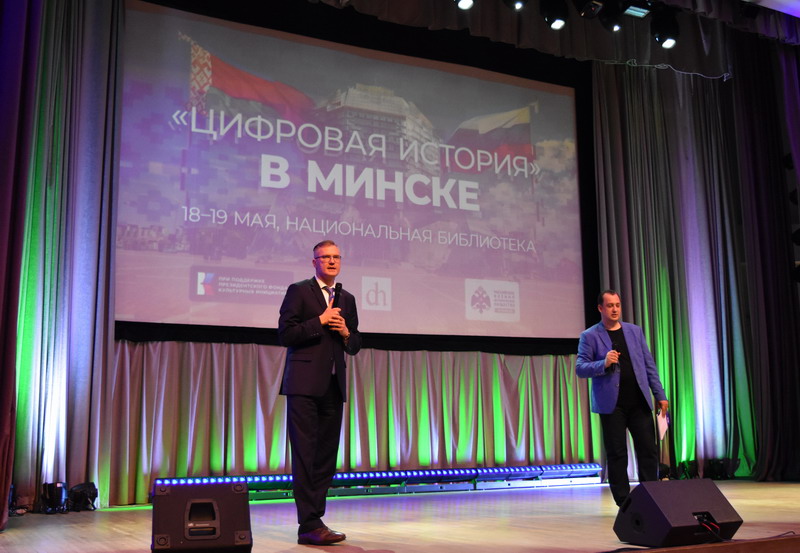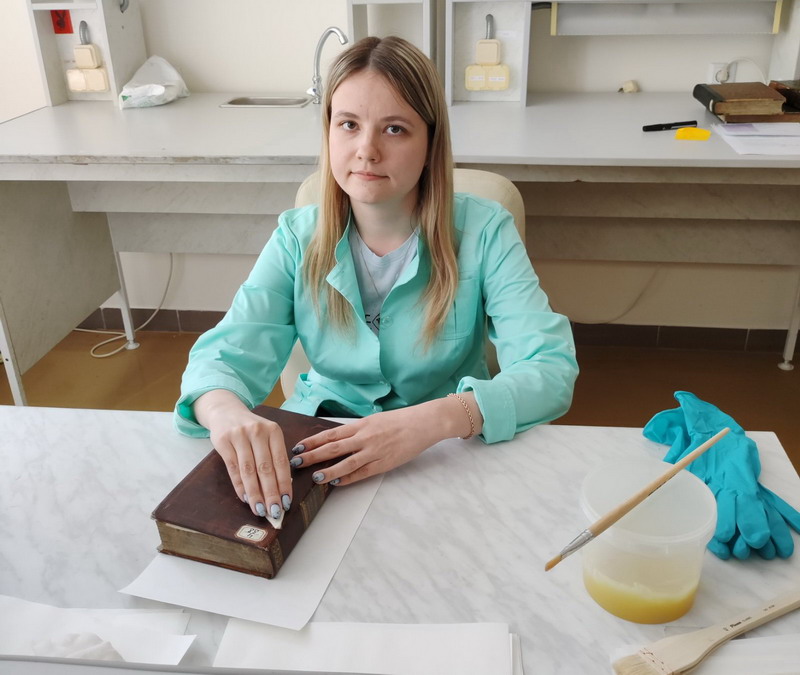A new project of the National Library of Belarus is dedicated to the Great Patriotic War – "Reading newspaper lines with your heart. On the 80th anniversary of the liberation of Belarus from the Nazi invaders."1st and 2nd Belorussian fronts. The Extraordinary State Commission. Lines from the diary. Photo reports about partisans. Schools, textbooks, library.
Every week from January to August 2024, the portal of the National Library publishes materials from newspapers of Soviet Belarus in 1944, reflecting the chronicle of news and events of that time.
February 13th. "The troops of the Leningrad Front have completely cleared the eastern coast of Lake Chudsky from the enemy."
February 14th. Korsun-Shevchenkovsky was released.
February 16th. "During the day, Soviet troops on all fronts shot down and destroyed 78 German tanks, shot down 27 aircraft."
February 17th. "The 1st Belarusian Front was created [by renaming the Belarusian Front]. He acted in the Bobruisk and Brest-Lublin directions." He participated in several operations, including Rogachesvko-Zhlobin, Brest-Lublin, and in 1945 – Berlin. Marshals of the Soviet Union K. K. Rokossovsky (February–November 1944) and G. K. Zhukov (November 1944 – June 1945) commanded the front.
"The 2nd Belorussian Front was created." Commander – Lieutenant General P. A. Kurochkin (February 1944 – April 1945).
Febuary18th. "The Central Committee of the KP(b) adopted a resolution on emergency assistance with weapons and ammunition to the partisans of the Polesie region."
(1418 days of the Great Patriotic War..., pp. 294–295).
There were persistent battles at the front. The newspapers of these days wrote about the offensive of our troops in the area of the cities of Luga, Leningrad region and Zvenigorod, Cherkasy region. About other sectors of the front, the Sovinformburo reports briefly reported that reconnaissance, artillery and mortar skirmishes and local battles were being conducted there in a number of points. There were daily losses of equipment in the German army, every day it lost dozens of tanks and aircraft.
At the sight of burned villages, destroyed buildings and industrial enterprises, the soldier's hands tightened on his weapon. Hatred of the enemy infused into the blood an even greater determination to drive the enemy from our land as soon as possible, to protect mothers and fathers, brothers and sisters, children and grandchildren.
Back on November 2, 1942 by decree of the Presidium of the Supreme Soviet of the USSR, an Extraordinary State Commission was created to establish and investigate the atrocities of the Nazi invaders and their accomplices and the damage they caused to citizens, collective farms, public organizations, state-owned enterprises and institutions of the USSR.
The commission's tasks included recording crimes, losses, destruction and looting, including cultural and historical values, noting in the acts the numbers of military units involved in this; compiling lists of citizens abducted to Germany (Vitsebsky Workers, No. 15, p. 1). All documents were carefully prepared and executed. Thus, the bill that the USSR was preparing to present to Germany after the Victory and presented at the Nuremberg trials did not cause a shadow of doubt about its validity. Trials in cases of atrocities committed by the Nazi invaders took place after the war in Belarus – Bobruisk, Vitebsk, Gomel, Minsk, and many other cities of the USSR, from the end of 1945 to the end of 1947. (Astashkin, D. 70 years ago in Bobruisk, Vitebsk and Gomel...).
Difficult military work continued daily, both on the front line and behind enemy lines.
Here are the lines from the diary of Vladimir Pavlovich Patolyatov, who went through the war as part of an engineering and sapper brigade (Volkovich, A.M. Letters of war):
"Since February 14, 1944, timber has been harvested and 95 piles were hammered the next night. The enemy is 1.5 km away from us. Frequent artillery attacks and counterattacks delayed our work. There was a time when individual Krauts crawled close to the bridge. My company participated in the defense, and we did everything to prevent the Krauts from going directly to the bridge. Before the onset of February 21, my company had to rebuild the bridge several times. Its length is 160 m, its load capacity is 60 tons. He will serve people even after the war."
The photo chronicle of the actions of the partisans behind enemy lines was left by the photojournalist of the Soviet Information Bureau Mikhail Anatolyevich Trakhman (1918–1976), here are some of his photographs (Savetskaya Belarus, No. 20, p. 3; No. 21, p. 2; No. 22, p. 3):



Another photo is in a note about the legendary partisan of Belarus – Vasily Isakovich Talash (1844–1946) (Vitsebsky workers, No. 15, p. 1), who in 1919 was the organizer of a partisan detachment and fought with the Polish occupiers, and during the Great Patriotic War went to the partisans to transfer his combat experience. December 25, 2024 marks the 180th anniversary of his birth.

The date of February 23 was approaching – on this day the creation of the Red Army in 1918 was celebrated – and publications appeared in newspapers for the 26th anniversary of this holiday.
Residents of the Kostyukovichi district prepared warm clothes as a gift to the fighters, and it was those units of the Belarusian Front that participated in their liberation (the area was liberated at the end of September 1943) (Za Radzimy, No. 29, p. 2):
Gifts came from other republics as well. Thus, first-aid kits for the population and books for libraries were sent from Leningrad, which had just escaped from the blockade, to the liberated regions of Belarus (Savetskaya Belarus, No. 21, p. 1). From different districts, they reported on assistance to families and children of front-line soldiers, on assistance to war and labour invalids.
At that time, more than 700 orphaned children were staying in orphanages in the liberated territories of Belarus (Savetskaya Belarus, No. 22, p. 2). Soon such houses were planned to open in Mozyr, Kalinkovichi, Khoiniki; in total, they were supposed to accept 1300 children in the Gomel region, 850 in Mogilev, Polesskaya 500 and Vitebsk – 350.
Schools were opened in the liberated areas, and the Belarusian State Publishing House, temporarily located in Moscow, has already printed more than 2.5 million textbooks for schoolchildren.
One of the textbooks mentioned in the article is kept in the collection of the National Library of Belarus, its texts were signed for printing on November 6 and 8, 1943, and the copies were printed in Moscow at the 3rd printing house "Red Proletarian".

Tsetsyurey U. A. Pryrodaznaystvo, 1944. The book is from the NLB Foundation.
"Soviet life has returned to the city. The book also returned with her" (Savetskaya Belarus, No. 22, p. 4). These words of the author of the article about the opening of the library in Mstislavl can be described the enthusiasm with which librarians tried to fill their native library with books and establish its work for readers as soon as possible.
And here is a photograph of the readers of the library in Cherikov, Mogilev region, published in the newspaper Savetskaya Belarus (No. 23, p. 4).
There were 28 weeks left before the liberation…
The material was prepared by L. G. Tupchienko-Kadyrova,
Candidate of Historical Sciences, chief bibliographer
of the information and analytical department.
Sources
Newspapers*
Full issues of newspapers are available at the links.
- Віцебскі рабочы : орган Віцебскага Абласнога і Гарадскога Камітэтаў КП(б)Б, Абласнога і Гарадскога Саветаў Дэпутатаў Працоўных, 1944, № 14.
- Віцебскі рабочы, 1944, № 15.
- За Радзіму : орган Магілёўскага абласнога і гарадскога КП Беларусі і абласнога і гарадскога Савета дэпутатаў працоўных, 1944, № 29.
- За Радзіму, 1944, № 30.
- “Раздавім фашысцкую гадзіну” : газета-плакат : выданне ЦК КП(б) Беларусі. – 1944, № 119.
- Савецкая Беларусь : орган ЦК КП(б) Беларусі, Саўнаркома і Прэзідыума Вярхоўнага Савета БССР, 1944, № 20.
- Савецкая Беларусь, 1944, № 21.
- Савецкая Беларусь, 1944, № 22.
- Савецкая Беларусь, 1944, № 23.
- Савецкая Беларусь, 1944, № 24.
- Сталінец : орган Грэскага райкома КП Беларусі і раённага Савета дэпутатаў працоўных, 1944, № 10.
- Сталінец : орган Добрушскага РК КП Беларусі і райсавета, 1944, № 13.
- Сталінская праўда : орган Веткаўскага РК КП Беларусі і Райсавета дэпутатаў працоўных, 1944, № 6.
*The titles of the newspapers are given in accordance with modern spelling.
Books, other sources
- Асташкин, Д. 70 лет назад в Бобруйске, Витебске и Гомеле прошли судебные процессы «советского Нюрнберга» : Да судимы будут! [Электронный ресурс] / Д. Асташкин // СБ. Беларусь сегодня. – 2017. – 13 дек. – Рэжым доступу: https://www.sb.by/articles/da-sudimy-budut.html. – Дата доступу: 01.02.2024.
- Валах, М. В 98 лет инсценировал свою смерть и ушел в партизаны. Реальная история деда Талаша [Электронный ресурс] / М. Валах ; фото В. Пивоварчика // БЕЛТА. – 2023. – 9 мая. – Рэжым доступу: https://www.belta.by/society/view/v-98-let-instseniroval-svoju-smert-i-ushel-v-partizany-realnaja-is.... – Дата доступу: 30.01.2024.
- Волкович, А.М. Письма войны : хрестоматия патриотизма / А. Волкович. – Брест : Альтернатива, 2019. – С. 196–197.
- Русак, П. Дед Талаш – символ белорусского патриотизма [Электронный ресурс] / П. Русак // Союзное государство : офиц. сайт Постоянного Комитета Союзного государства. – 2019. – 25 дек. – Рэжым доступу: https://xn--c1anggbdpdf.xn--p1ai/history/223724/. – Дата доступу: 30.01.2024.
- Трахман, М. Минск. Круглая площадь. В центре – памятник воинам Советской Армии и белорусским партизанам, павшим при освобождении Белоруссии от немецко-фашистских захватчиков [Изоматериал] : [Открытка] / фот. М. Трахман. – Москва : Изогиз, 1959 (М. : Полиграфкомб.). – 1 л.
- 1418 дней Великой Отечественной войны : хронология событий : хронология событий : [солдату Великой Отечественной посвящается / сост. Е. В. Малашевич ; науч. ред.: Е. И. Барановский, Г. И. Баркун ; фото: В. В. Харченко]. – Минск : Мастац. літ., 2014. – 421, [1] с.
- Цецюрэў, У.А. Прыродазнаўства : падручнік для пачатковай школы : у 2 ч./ В. А. Тецюрэў. – Выд. 9-е з 11-га рускага. – [Мінск] : Дзяржаўнае выдавецтва БССР, 1944.
Ч. 1 : для 3-га класа. – 78, [1] с. – 50000 экз.
Ч. 2 : для 4-га класа. – 122, [1] с. – 40000 экз.











